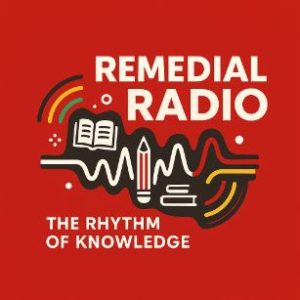Explore examples of bad cultural practices in East Africa and Uganda, and discover effective ways to protect children from negative cultural influences while fostering a strong, positive cultural identity.
Contents
Introduction:
Cultural practices are an integral part of any society, shaping the values, beliefs, and behaviors of its people. In East Africa, cultural traditions have been passed down through generations, providing a sense of identity and belonging. However, not all cultural practices are beneficial. Some traditions, particularly those rooted in outdated beliefs, can be harmful and perpetuate inequalities, especially for children and vulnerable groups. This blog examines examples of bad cultural practices in East Africa, with a focus on Uganda, and offers strategies for parents and communities to protect children from these negative influences while supporting their cultural identity.
Examples of bad cultures in Uganda
Identifying and addressing negative cultural practices or values in any society is essential for promoting positive social change. In Uganda, as in any country, there may be cultural practices that are considered detrimental to individuals or the community. Some examples include:
- Female Genital Mutilation (FGM): Although not as prevalent as in some other African countries, FGM still occurs in some Ugandan communities, particularly in the northeastern regions. This practice poses severe health risks and violates the rights of girls and women.
- Child Marriage: Child marriage remains an issue in certain parts of Uganda, with girls being married off at a young age, often against their will. This can result in early pregnancies, limited educational opportunities, and health complications.
- Widow Cleansing: In some Ugandan communities, a widow is expected to participate in a cultural practice called widow cleansing, which involves sexual relations with a male relative of her deceased husband. This practice can expose women to health risks and perpetuate gender inequality.
- Discrimination Against Albinos: Some Ugandan communities hold superstitions about albinos, leading to discrimination and stigmatization, putting individuals with albinism at risk of violence and exclusion.
- Child Marriage: Child marriage remains an issue in certain parts of Uganda, with girls being married off at a young age, often against their will. This can result in early pregnancies, limited educational opportunities, and health complications.
How can you control your children from getting bad cultural values from the community?
To prevent children from adopting negative cultural values from their community, parents and caregivers can take several steps:
- Open Communication: Foster open and honest communication with your children. Encourage them to ask questions and express their thoughts and concerns.
- Education: Provide your children with accurate information about cultural practices and their potential consequences. Teach them critical thinking skills to evaluate these practices.
- Promote Positive Values: Instill values of respect, empathy, equality, and human rights in your children. Encourage them to question cultural practices that may conflict with these values.
- Lead by Example: Be a role model by embodying the positive values and behaviors you wish to instill in your children.
- Community Involvement: Engage with your community to advocate for positive change and raise awareness about harmful cultural practices. Join or support local organizations working to address these issues.
- Legal Support: Familiarize yourself with and utilize legal protections against harmful practices, such as laws against child marriage and FGM, to ensure the safety and well-being of your children.
- Promote Positive Values: Instill values of respect, empathy, equality, and human rights in your children. Encourage them to question cultural practices that may conflict with these values.
- Education: Provide your children with accurate information about cultural practices and their potential consequences. Teach them critical thinking skills to evaluate these practices.
It’s essential to approach these issues with cultural sensitivity and respect for local traditions while working toward positive change and safeguarding the rights and well-being of children.
What are Some Examples of Inequalities in Uganda?
Uganda, like many other countries, faces several forms of inequality that affect various aspects of life. These inequalities often stem from social, economic, and cultural factors that perpetuate disparities among different groups within society. Understanding these inequalities is crucial for addressing them and working towards a more equitable society.
1. Gender Inequality:
One of the most prevalent forms of inequality in Uganda is gender inequality. Women and girls often face significant disadvantages in access to education, employment, and healthcare. Cultural practices such as early marriage, gender-based violence, and unequal inheritance rights further exacerbate the situation, limiting opportunities for women to fully participate in economic and social life.
2. Economic Disparities:
Economic inequality in Uganda is marked by a wide gap between the rich and the poor. While urban areas may experience more development and better access to services, rural communities often struggle with poverty, limited infrastructure, and fewer economic opportunities. This urban-rural divide contributes to persistent economic disparities that hinder the overall development of the country.
3. Educational Inequality:
Access to quality education varies significantly across different regions and social groups in Uganda. Children from poorer families, especially in rural areas, often have limited access to educational resources, leading to lower school enrollment and higher dropout rates. Additionally, cultural biases sometimes prioritize boys’ education over girls’, further entrenching gender inequality in education.
4. Ethnic and Regional Inequality:
Uganda is home to diverse ethnic groups, and unfortunately, ethnic and regional disparities often lead to unequal access to resources and opportunities. Certain regions, particularly in the north and east, have historically been marginalized in terms of development and infrastructure investment, leading to significant socio-economic disparities between these areas and more developed regions like Central Uganda.
5. Inequality in Healthcare Access:
Healthcare inequality is another critical issue in Uganda. Rural areas frequently suffer from a lack of healthcare facilities, medical supplies, and trained professionals. This disparity means that people living in remote regions often have limited access to essential healthcare services, leading to higher mortality rates and poorer health outcomes compared to those in urban centers.
6. Disability Discrimination:
People with disabilities in Uganda face considerable barriers in accessing education, employment, and public services. Cultural stigma, lack of accessible infrastructure, and limited support services contribute to their marginalization. Despite efforts to promote disability rights, significant challenges remain in ensuring equal opportunities for people with disabilities.
7. Social Inequality Based on Age:
Age-based discrimination is another form of inequality in Uganda, where both the elderly and the youth may face social and economic exclusion. The elderly often lack adequate social protection, while young people, particularly in rural areas, struggle with high unemployment rates and limited opportunities for personal and professional development.
Addressing these inequalities requires comprehensive strategies that involve policy reforms, community engagement, and the promotion of social justice and equity. By acknowledging and addressing these disparities, Uganda can move towards a more inclusive and equitable society.
Conclusion:
While cultural practices are essential for maintaining a sense of identity and community, it is crucial to recognize and address those that are harmful or abusive. In East Africa and Uganda, efforts to combat these negative cultural practices must be accompanied by initiatives that promote positive cultural values and protect children from harm. By fostering open communication, educating children about their cultural heritage, and supporting positive practices, parents and communities can help children develop a strong sense of identity while shielding them from the dangers of harmful traditions. Ultimately, a balanced approach to cultural preservation and reform is necessary to ensure a safe and inclusive environment for future generations.
FAQs on bad cultural practices in Uganda
1. What are some examples of bad cultural practices in East Africa? Examples include female genital mutilation (FGM), early child marriage, and certain initiation rites that involve harmful physical practices or discrimination.
2. How can you control your children from adopting bad cultural values from the community? Parents can control this by fostering open communication, teaching children about positive cultural values at home, and encouraging critical thinking so that children can distinguish between harmful and beneficial traditions.
3. What are the bad cultural practices in Uganda? Harmful practices in Uganda include FGM, child marriage, and certain discriminatory practices against women and people with disabilities.
4. What are abusive cultural practices? Abusive cultural practices are traditions that cause physical, emotional, or psychological harm. These can include forced marriages, gender-based violence, and rites of passage that involve coercion or harm.
5. What are some examples of inequalities in Uganda? Inequalities in Uganda often arise from discriminatory cultural practices, such as gender inequality, limited access to education for girls, and economic disparities based on ethnicity or social status.
6. How can harmful traditional practices be stopped? Stopping harmful traditional practices requires a multi-faceted approach, including education, community outreach, legal reforms, and the promotion of alternative, positive cultural practices.
7. What are some of the bad cultural practices done in your community? These might include harmful initiation rites, gender discrimination, or practices that exclude or marginalize certain groups based on age, gender, or social status.
8. How can you help children develop a sense of cultural identity? Encourage children to learn about their cultural heritage, participate in positive cultural activities, and engage with elders and community leaders who can impart valuable cultural knowledge.
9. How can parents support a child’s culture? Parents can support their child’s culture by practicing cultural traditions at home, celebrating cultural festivals, and exposing children to their heritage through storytelling, language, and music.
10. What are the long-term effects of harmful cultural practices? Long-term effects can include physical and psychological trauma, perpetuation of gender and social inequalities, and the loss of positive cultural traditions. Combatting these practices is essential for building a healthier, more equitable society.


Leave a Reply